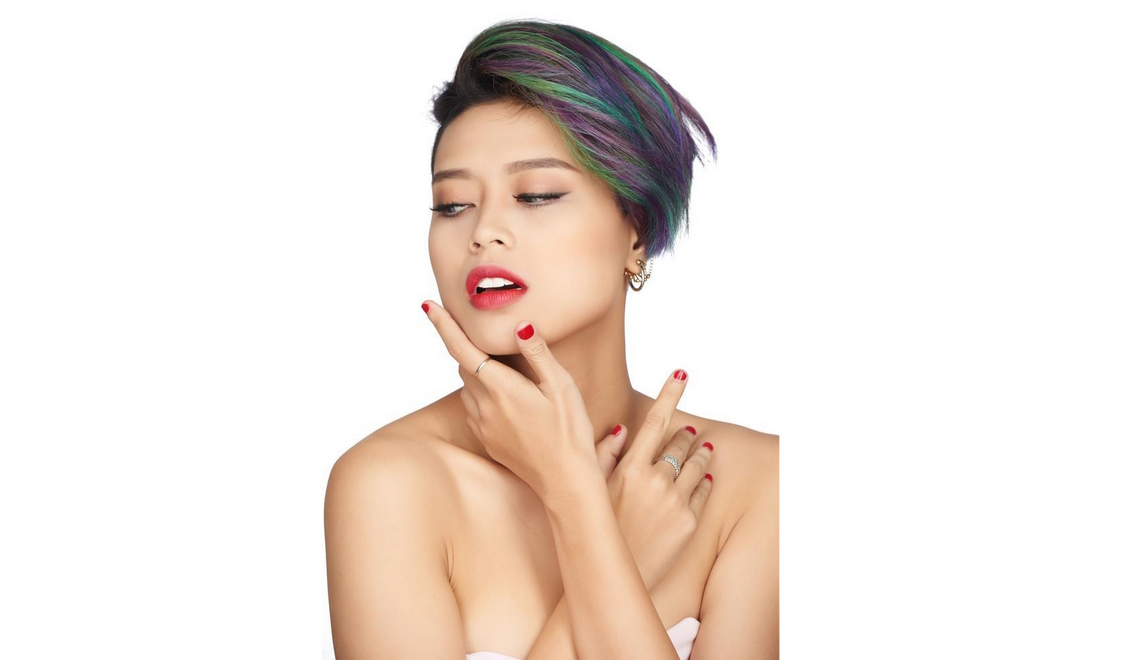Bold New Hair Color Ideas to Inspire You
- Written by NewsServices.com

Types of Hair Color
Hair color is an important part of our overall look and can have a huge impact on how we feel about ourselves. It can be used to dramatically change your appearance, or simply to subtly enhance your natural beauty. With so many different types of hair colors available today, it can be difficult to decide which one is right for you. To help make the decision easier, here are some of the most common types of hair colors:
Natural Hair Color: This is the color that you were born with and includes shades such as black, brown, blonde, red and silver. Natural colors are a great way to go if you want to keep your hair looking natural and healthy or if you just want something low maintenance that won’t require much upkeep. At home hair color such as natural color is a convenient way for individuals to experiment with their look and achieve a desired hair color.
Highlights/Lowlights: Highlights and lowlights add dimension to your existing color by creating different tones throughout the strands. Highlights lighten certain sections while lowlights darken them – this creates more depth in your hair color without having to completely dye it all over again!
Ombre/Balayage: Ombre involves gradually lightening from dark roots into lighter tips while balayage has a more blended effect with no definite line between the darker roots and lighter ends.
Benefits of Hair Coloring
Hair coloring can be a great way to add some life and personality to your style. From highlights and lowlights to all-over color, hair coloring can offer a variety of creative options for changing up your look. But in addition to being fashionable, hair coloring also offers some surprising health benefits. Here are just a few of the advantages of going for the dye:
- Covering Grays: The most obvious benefit of hair coloring is that it covers gray hairs that come with age or genetics. While there’s nothing wrong with embracing your natural gray, many people prefer not to have visible grays on their head, which can make them look older than they actually are. Hair color can help you keep up a more youthful appearance while still looking naturally beautiful.
- Strengthening Hair: When done correctly, professional hair color treatments are actually beneficial for the health of your hair! Many formulas contain proteins and other ingredients that help strengthen each strand as it's colored — leading to shinier and healthier-looking locks in no time!
Possible Risks and Precautions for Hair Coloring
Hair coloring is a popular way to change up your look and express yourself, but it does come with some risks that you should be aware of. Whether you’re considering getting your hair professionally colored or DIY-ing it at home, it’s important to understand the possible risks and take necessary precautions in order to maintain healthy hair.
One risk associated with hair coloring is scalp irritation or allergic reaction. This can happen when the chemicals in the dye are too strong for your scalp, resulting in redness, itching, burning or hives. To prevent this from happening, always do a patch test before applying any colorant and make sure you are using a product that is specifically designed for sensitive scalps. Additionally, try not to leave the dye on longer than what is recommended on the package instructions as this could increase irritation.
Another common risk when it comes to hair coloring is damage due to over-processing or frequent application of harsh chemicals. To reduce damage caused by coloring your hair too often or using harsh products, use an intensive conditioning treatment once a week such as deep conditioning masks and treatments specifically designed for color-treated hair.
Tips for Choosing the Right Shade and Professional Colorist
When it comes to getting your hair colored, it is important to choose the right shade and an experienced colorist. The wrong color or inexperienced professional can leave you with a look that won’t last, or even worse, damage your hair. Here are some tips for finding the right shade and professional colorist:
- Do Your Research: Before you make any decisions about shades or stylists, do some research online. Look at photos of people with similar coloring and find out which colors work best for their skin tone. Also read reviews of different salons in your area so you can get an idea of what others have experienced when visiting them for their hair coloring needs.
- Consult With a Professional Colorist: Once you’ve narrowed down your choice in shades and salons, consult with a professional colorist who can help you determine the best shade for your skin tone as well as give advice on how to maintain it after the service is completed. An experienced professional will be able to answer all of your questions about application techniques and maintenance tips that will help keep your new look looking great over time!
Conclusion
Hair color is a complex and fascinating subject. It ranges from the rarest of natural hues to the most vibrant of dyed shades, and can be used to express individual style or even convey cultural identity. While some people choose to stay with their natural hair color, others will explore the possibilities offered by changing shades. Ultimately, there are no wrong choices when it comes to choosing a hair color; what matters most is that you feel confident and comfortable in your own skin.





